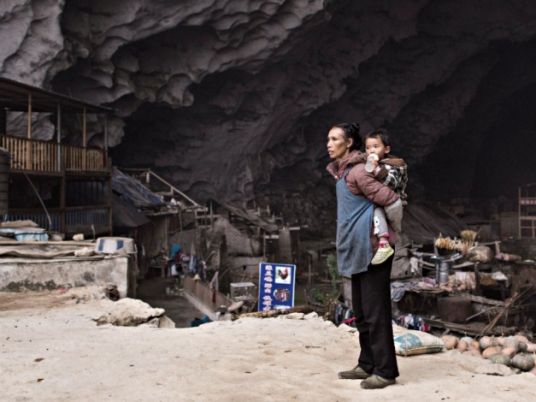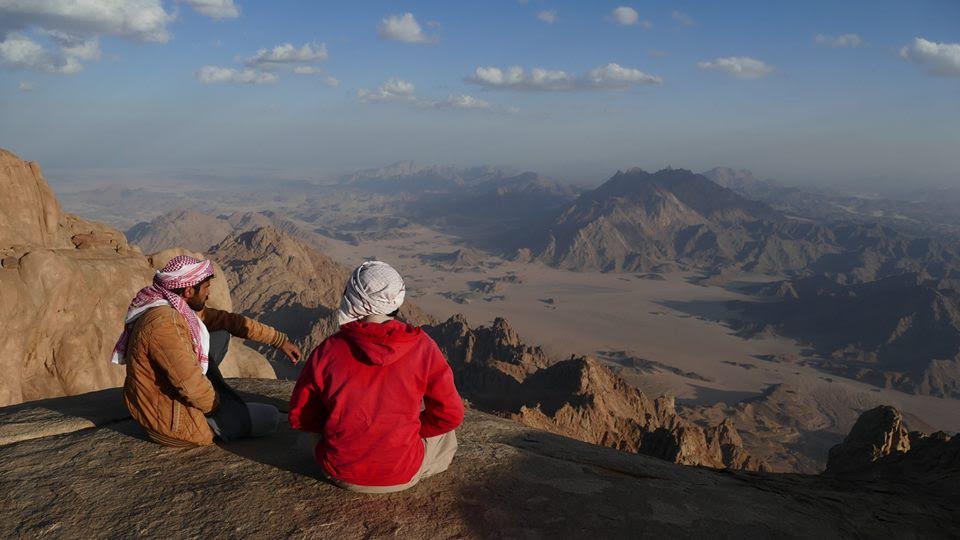
High in the misty hills of southwestern China, an hour’s hike from any road, the lowing of livestock echoes through Zhongdong village, where a group of 18 families live inside an enormous natural cave. The final hold-outs of the country’s “last cave-dwelling” village have had modern conveniences, like electricity, for years.
But their only access to the outside world is a footpath winding through Guizhou province’s rugged mountain terrain.
Now a local tourism development company has built a US$2.2mil (RM9.81mil) cable car that residents will be allowed to use for free. The funicular will make their daily lives easier and furnish new business opportunities, it says. It will go into operation May 1. Currently, villagers must haul in all food and products that they can’t make or grow themselves – even large items like furniture – from the nearest town, a three hour commute each way. While some residents are excited by the economic prospects of more tourists, others are unconvinced that the new transport will improve their lives in one of China’s poorest regions.
The cable car isn’t convenient for the rural people of Zhongdong, said 22-year-old Wang Xingguo, since poultry and unwieldy cargo will not be allowed in cabins. “They said they’d build us a road 15 years ago, but then they discovered this was a place they could make money off and so chose not to build it,” he said, ushering a herd of goats into a pen near the mouth of the nearly 200-metre deep cave.

A shepherd leading his sheep on the only path to reach Zhongdong village, where a group of 18 families live inside an enormous natural cave.
He added: “When authorities decide to develop a scenic spot, only they get rich.” The name Zhongdong translates to “middle cave”, a reference to its position between two smaller but uninhabited caverns.
Beneath the high ceiling, thatch-walled homes, piles of firewood, and domestic bric-a-brac like washing machines and bamboo posts hung with clean laundry surround a central square, fashioned into a dirt-floored basketball court.
There is no consensus as to when people first moved into the cave, but some families say they have lived there for generations. Most are of the Miao ethnic minority.

A view of the village of Zhongdong, China’s ‘last cave-dwelling’.
Wang’s father, Wang Hongqing, said their family moved into the cave when he was just a baby, not long after the founding of the PRC in 1949.
The cave was previously occupied by bandits. But when the People’s Liberation Army drove them out, Wang’s family seized the opportunity to make it their home.
Twenty years ago, he became the first in Zhongdong to convert a portion of his home into a small guesthouse and now makes some US$2,600 (RM11,590) a year housing tourists.
New visitors brought by the cable car will make it “easier to make money” but there are downsides, he concedes.
For almost a decade, the government asked villagers to move out, but Wang refused, afraid of losing such an important supplement to his income from growing corn and raising free-range chickens.
There are concerns too that if they leave, and the area is formally incorporated into the nearby Getu River Park for ticket-paying visitors, they would be unable to return – or even visit.

The village have had modern conveniences, like electricity, for years. But their only access to the outside world is a footpath winding through Guizhou province’s rugged mountain terrain.
Wang explained: “When they make this a tourist site, they’ll charge entrance fees, and I wouldn’t even be able to afford to get into the place that used to be my home.” Wang’s neighbour, Wei Xiaohong, hopes the improvements will bring the young people back from the cities where they have gone to find jobs. Hundreds of millions of rural migrants have moved to urban areas since China began economic reforms in the late 1970s, hollowing out large swathes of the countryside. The cave once housed a vibrant school with more than two hundred students from the broader region – roofless, like a number of other structures inside with no need of protection from rain.
But it was shuttered by authorities some time ago, and now Wei’s 12-year-old son must walk two hours to class.

A shopkeeper stands in front of his store in Zhongdong village.
Read more at http://www.star2.com/people/2017/02/23/families-live-in-cave-china-zhongdong-village/#LUcY2lA60Hoksfjs.99
The development company manager, surnamed Luo, said the project would revitalise the village, gutted by the rural-to-urban migration.
Zhongdong’s houses would be repaired, the primary school restored, and “the mess of dirty things inside” the cave cleared out, he said. “In five years, we will have reproduced some of the original buildings and recreated the primitive life of the men out farming and the women at home doing housework for the tourists to visit,” he added.
But a hiker visiting the cave said he would not take the cable car once it was finished, saying it “damages this place and its original style”.

Villages of Zhongdong are not willing to move as they fear that they will not be able to return, or lose their way of life living in the cave.
The younger Wang agreed. He missed the cave while working his factory job in southern China’s industrialised, prosperous Guangdong province, where he spends most of each year, but is concerned about its future. “We don’t live in an actual zoo, but it’s more or less the same thing,” he said as a dozen loud tourists in athletic gear trooped in to snap selfies. “I don’t dare imagine what this place will be like in the future.”



